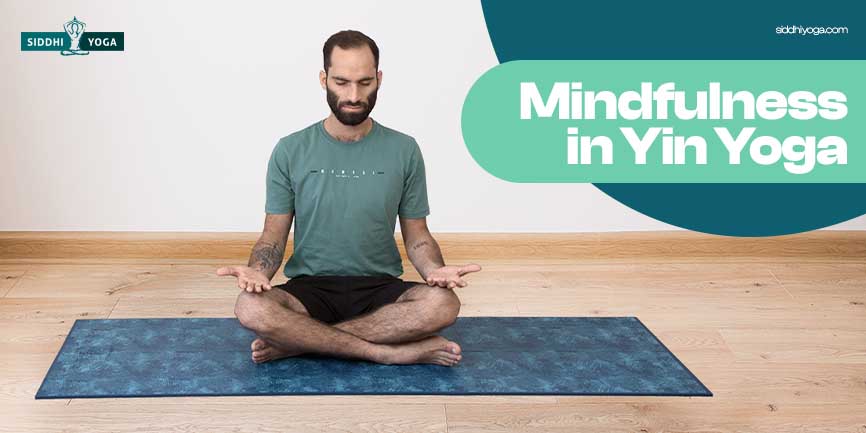
This article is about mindfulness in Yin Yoga Meditation, why Yin Yoga is rightly considered a meditation, and some tips to make your Yin Yoga practice a complete meditation in itself.
Introduction
Modern life is stressful. You are constantly rushing about planning, meeting deadlines and attending to personal and professional commitments. Waking up each morning, you never know how your day will pan out. Most days, someone or something will rub you the wrong way and you will react with impatience, anger or irritation. You soon realize you have become conditioned to react to events and often regret your actions later. Yin Yoga practice teaches you to be mindful of and modify your responses. It shows you how to gradually tone down your reaction and achieve inner calm in confrontation and conflict.
Yin Yoga Meditation
When you do your Yin Yoga stretches mindfully, they become tools that make your day better and more in tune with how you want them to be — less stressful and more under your control. Each pose in your Yin Yoga practice can be a mini meditation session.
In Yin Yoga meditation, you are not focused on directing or controlling your experience. Instead, it is done to develop the Yin qualities of the mind, such as receptivity, acknowledgment, reflection and acceptance. The following tips can help you transform your Yin Yoga practice into a complete meditation.
- Yin Yoga poses target deep connective tissue such as fascia, ligaments and tendons. The slow, meditative nature of the poses helps you direct your focus inward to be connected with your physical sensations and emotions. Once you settle into a pose, work towards finding stillness. Sit still and consciously relax. Be receptive to whatever comes up.
- Remain in a Yin Yoga pose for as long as you can. The sensations that surface can sometimes be hard to handle. However, the benefits that come with maintaining poses for longer durations are aplenty. Holding a pose for a long time helps you develop stability, an essential quality in facing life’s difficulties.
- It is important to find your edge when you do a Yin Yoga stretch the mindful way. The edge is where you become aware of the stress or pain in the area of the body being stretched. When you come to the edge of the stretch, do not push beyond it to the point of intense pain. If you find a pose too painful or difficult, come out.
- Once you relax into a Yin Yoga meditative pose, ensure that your breath is the only movement in the body. Observe how your belly rises and falls with each breath you take. Let your breath flow smoothly in and out of your body, bringing in calm with each inhale and washing out stress with each exhale.
- Come out of a pose gently. Your connective tissue would have lengthened and be sore with the Yin Yoga stretch. Notice how you feel physically, emotionally and psychologically after a session ends. Enjoy the sense of release that accompanies the end of each pose. You can do a counterpose to bring the balance back to neutral if you feel too fragile.
Takeaway
The meditative quality of a Yin Yoga practice can steady the mind, bring clarity and develop the quality of being present.
See Also: Renew Yoga Teacher Training Online
Mindfulness in Yin Yoga
Mindfulness is your ability to be present at the moment without being distracted. It is being aware of where you are and what you are doing each moment. It is about achieving calm in the eye of the storm, not reacting or being overwhelmed by what is happening around you. Mindfulness prepares you for advanced meditation.
You cannot be mindful if you are constantly living in your head. To become mindful, you have to be connected to your body. You become mindful when you bring awareness to what you are experiencing through your senses or your state of mind through your thoughts and emotions. All of us possess the ability to be mindful, but it is a skill that has to be developed. Yin Yoga practice allows you to put yourself in a state of mindfulness whenever you need to.
You gain greater insight into your inner universe when you mindfully do a Yin Yoga stretch. You allow deeply buried emotions, some of which you may not have been aware of, to rise as sensations or mild pain. You become a silent, non-reactive witness to whatever comes up. You acknowledge them and let them go. Each Yin Yoga stretch, thus, becomes a meditation in mindfulness.
As you progress with your Yin Yoga practice, you realize that it becomes easier for you to acknowledge, stay with and let go of feelings and sensations that rise to the surface. You free yourself a little bit more with each session. Mindfully doing a Yin Yoga stretch can be a therapeutic practice that heals you on all levels — physically, mentally, emotionally and energetically.
As you become increasingly mindful of doing your Yin Yoga practice, you can remain in the present throughout the practice. Over time, Yin Yoga meditation will help you remain in the present throughout the day. You learn to acknowledge the challenges and obstructions you encounter in your day-to-day life, approach them clear-headed and unruffled, and find solutions for them.
Takeaway
Yin Yoga meditation teaches you to respect and love your body and improve your relationship with your body, yourself and others sustainably.
The Bottomline
Mindfully doing a Yin Yoga stretch allows you to recalibrate yourself and access an inner sanctuary of peace in difficult times. It connects you to your inner wisdom and erases deep-rooted reaction patterns to stress and confrontation. Enlist yourself in a Yin Yoga meditation course where an instructor will show you the finer points of remaining mindful during practice and throughout the day.
You can also check our online Yin Yoga courses on our website siddhiyoga.com .